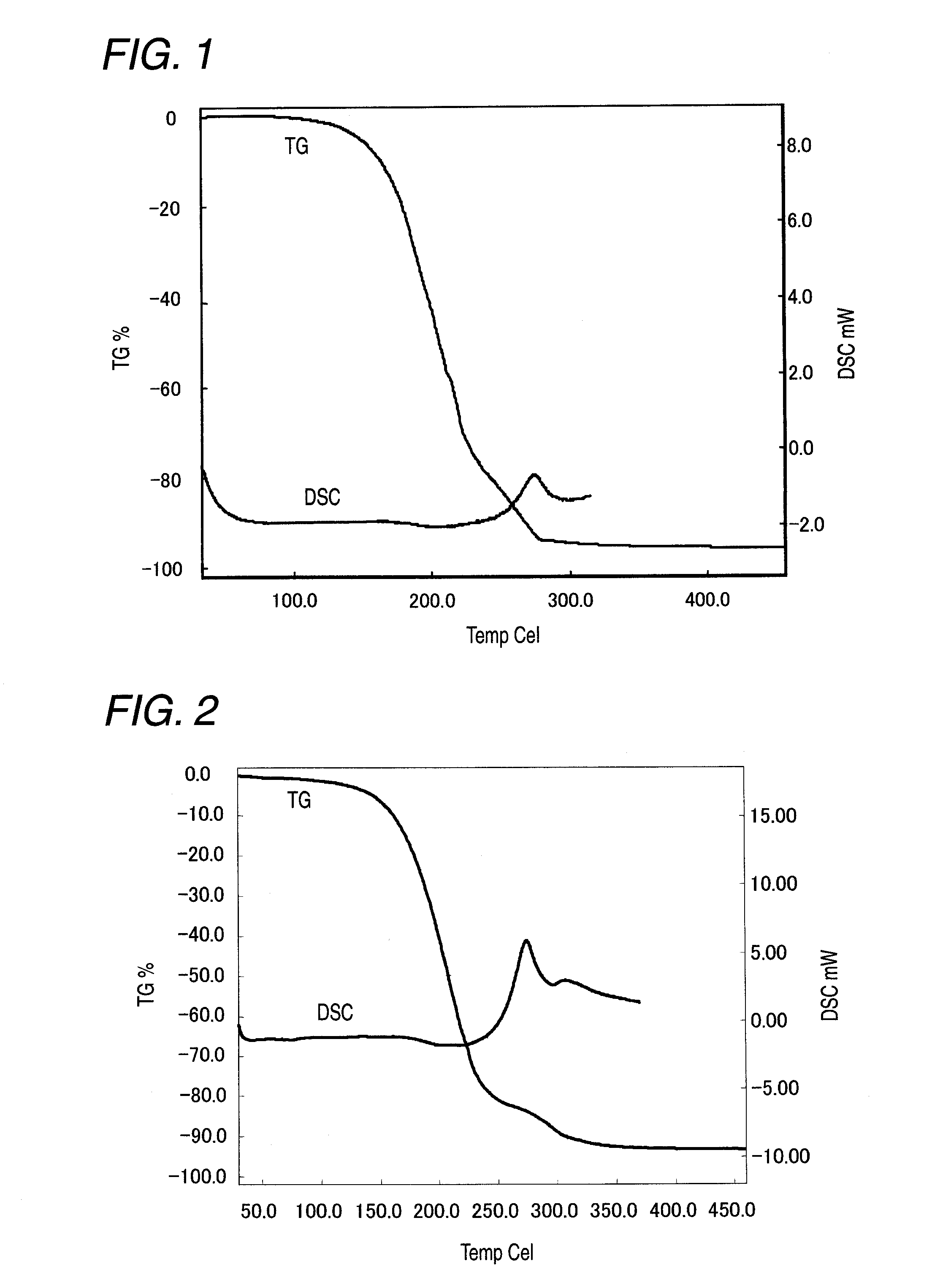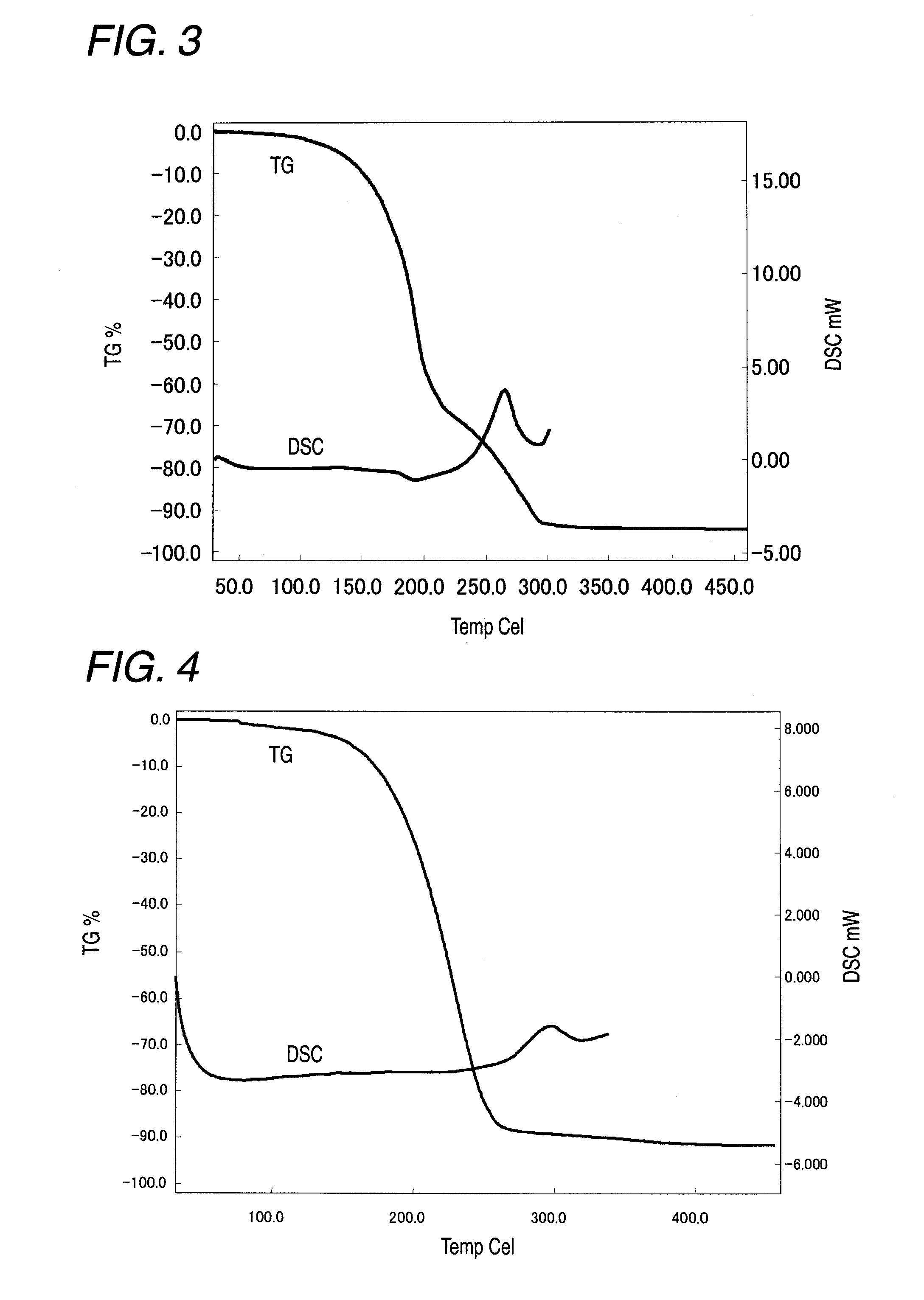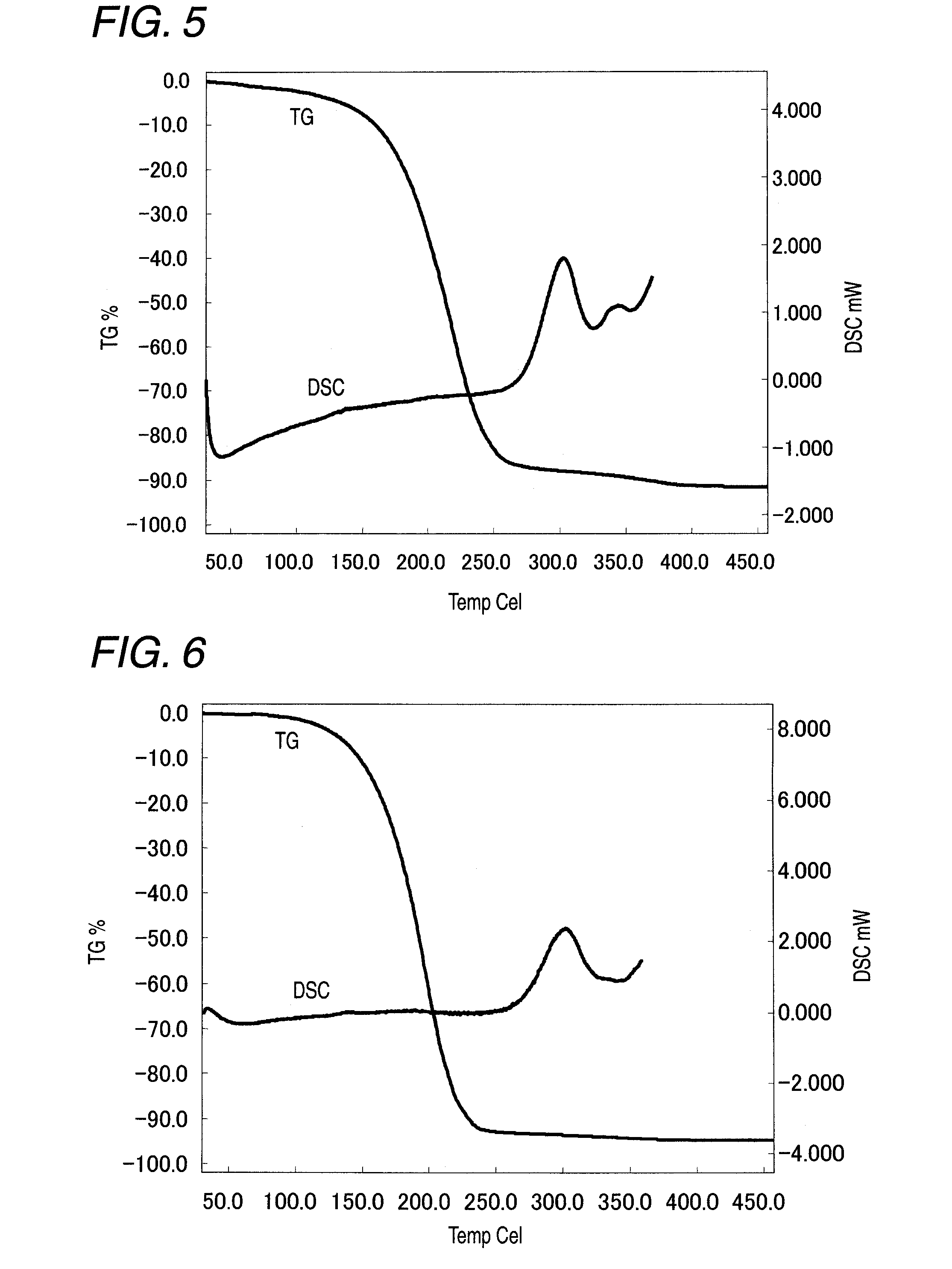Metal-containing compound, its production method, metal-containing thin film, and its formation method
a technology of metal-containing thin films and metal-containing compounds, which is applied in the direction of group 3/13 element organic compounds, group 5/15 element organic compounds, organic chemistry, etc., can solve the problems of not meeting the demand characteristics of barrier layers, ticl/sub>4/sub>is not suitable as a raw material, and the pvd method is not suitable, etc., to achieve appropriate thermal stability, appropriate volatility, and appropriate stability
- Summary
- Abstract
- Description
- Claims
- Application Information
AI Technical Summary
Benefits of technology
Problems solved by technology
Method used
Image
Examples
reference example 1
Synthesis of N,N′-diisopropyl acetamidine
[0073]30.0 g of trimethyl orthoacetate, 15.0 g of acetic acid and 30.0 g of isopropylamine were placed in a flask, and refluxed under heating for 12 hours. The flask was cooled to room temperature, and 200 ml of heptane and 48.3 g of a methanol solution of sodium methoxide (28%) were added thereto. After stirring at room temperature for 1 hour, fractions having a distillation temperature of 95° C. or lower were removed under atmospheric pressure. After cooling the flask to room temperature, 45 ml of water was added thereto, and the resulting mixture was vigorously stirred for 10 minutes. The mixture was allowed to stand for 30 minutes to separate the same into two layers, and an aqueous layer was removed. An oil remained after concentrating an organic layer was distilled under reduced pressure to obtain 28.5 g of N,N′-diisopropylacetamidine (yield 80%).
[0074]1H NMR (500 MHz, CDCl3, δ / ppm) 3.62 (br, 2H), 1.84 (br, s, 3H), 1.09 (d, J=7 Hz, 12H)...
reference example 2
Synthesis of N,N′-di-tert-butylformamidine
[0075]148.2 g of triethyl orthoformate and 60.0 g of acetic acid were placed in a flask, and 146.5 g of tert-butylamine was introduced therein while stirring. After refluxing under heating from 12 hours, the flask was cooled to room temperature, and 500 ml of heptane and 193.0 g of a methanol solution of sodium methoxide (28%) were added thereto. After stirring at room temperature for 1 hour, fractions having a distillation temperature of 95° C. or lower were removed under atmospheric pressure. After cooling the flask to room temperature, 150 ml of water was added thereto, and the resulting mixture was vigorously stirred for 10 minutes. The mixture was allowed to stand for 30 minutes to separate the same into two layers, and an aqueous layer was removed. An oil remained after concentrating an organic layer was distilled under reduced pressure to obtain 103.6 g of N,N′-di-tert-butylformamidine (yield 66%).
[0076]1H NMR (500 MHz, CDCl3, δ / ppm) ...
reference example 3
Synthesis of N,N′-diisopropylpropioamidine
[0077]44.9 g of triethyl orthopropionate and 15.3 g of acetic acid were placed in a flask, and 30.3 g of isopropylamine was introduced therein while stirring. After refluxing under heating for 12 hours, the flask was cooled to room temperature, and 100 ml of heptane and 48.4 g of a methanol solution of sodium methoxide (28%) were added thereto. After stirring at room temperature for 1 hour, fractions having a distillation temperature of 95° C. or lower were removed under atmospheric pressure. After cooling the flask to room temperature, 45 ml of water was added thereto, and the resulting mixture was vigorously stirred for 10 minutes. The mixture was allowed to stand for 30 minutes to separate the same into two layers, and an aqueous layer was removed. An oil remained after concentrating an organic layer was distilled under reduced pressure to obtain 26.3 g of N,N′-diisopropylpropioamidine (yield 66%).
[0078]1H NMR (500 MHz, CDCl3, δ / ppm) 3.63...
PUM
| Property | Measurement | Unit |
|---|---|---|
| temperature | aaaaa | aaaaa |
| reaction time | aaaaa | aaaaa |
| temperature | aaaaa | aaaaa |
Abstract
Description
Claims
Application Information
 Login to View More
Login to View More - R&D
- Intellectual Property
- Life Sciences
- Materials
- Tech Scout
- Unparalleled Data Quality
- Higher Quality Content
- 60% Fewer Hallucinations
Browse by: Latest US Patents, China's latest patents, Technical Efficacy Thesaurus, Application Domain, Technology Topic, Popular Technical Reports.
© 2025 PatSnap. All rights reserved.Legal|Privacy policy|Modern Slavery Act Transparency Statement|Sitemap|About US| Contact US: help@patsnap.com



